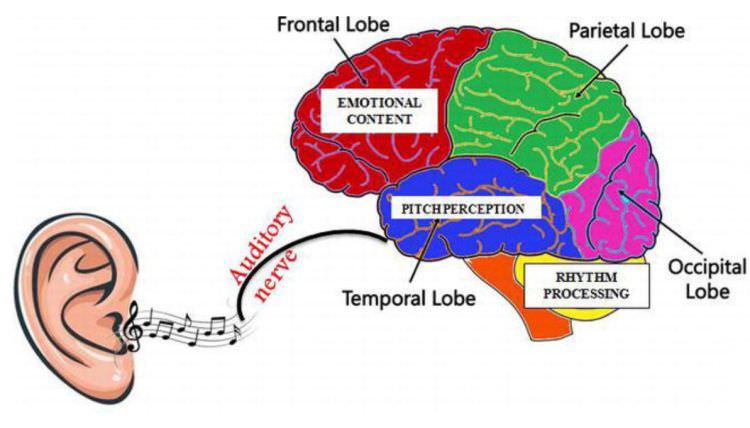The power of music in workplace stress management
In today's fast-paced and demanding work environments, stress has become an all too common aspect of our lives. As employees navigate through tight deadlines, heavy workloads, and challenging tasks, the need for effective stress management techniques is more pressing than ever.
While various methods exist to combat workplace stress, one often overlooked yet incredibly potent tool is music. Harnessing the power of music in the workplace can significantly alleviate stress, enhance productivity, foster creativity, and promote overall well-being among employees.
The Science Behind Music and Stress Reduction:
The human brain is inherently designed to recognize and respond to music through elements such as rhythm, repetition, tones, and songs. Electrical signals from music and other sounds are transmitted by the auditory nerve to the auditory cortex in the temporal lobe. Research, utilizing magnetic resonance imaging and positron emission tomography scans, indicates that various brain regions form neural networks responsible for decoding and understanding different aspects of music.
Pitch perception, essential for melody, chords (simultaneous sounds of multiple pitches), and harmony, involves a specific area in the right temporal lobe. An adjacent region is responsible for interpreting timbre, enabling the brain to distinguish between different instruments playing the same note. The frontal lobes are engaged in perceiving the emotional content of music, while the cerebellum processes rhythm (refer to Figure below).
Music that reaches a volume capable of inducing "spine tingling" can activate the brain's reward region, akin to pleasurable stimuli like alcohol or chocolate.
While any healthy human brain can execute the intricate processes needed for music detection, artists' brains exhibit a more refined tuning for these tasks.

Numerous scientific studies have demonstrated the profound impact of music on stress reduction. Listening to music has been shown to stimulate the release of endorphins, the brain's natural feel-good chemicals, leading to a state of relaxation and improved mood. Additionally, music activates the reward center of the brain, triggering the release of dopamine, a neurotransmitter associated with pleasure and motivation. By engaging these neurochemical processes, music can effectively reduce stress and anxiety, providing employees with a much-needed respite from workplace pressures.
Moreover, music can modulate heart rate, blood pressure, and cortisol levels, effectively reducing physiological markers of stress. Slow, soothing melodies can help regulate breathing and induce a state of calmness, allowing employees to unwind and recharge during breaks or after intense periods of work. By creating a harmonious sonic environment, organizations can create a workplace that supports employee well-being and stress management.
Boosting Productivity and Focus:

Music's influence extends beyond stress reduction; it has the power to enhance productivity and focus in the workplace. The right music can create an optimal environment for concentration and task performance. According to the theory of the Mozart Effect, classical music can improve cognitive function, memory, and information retention, making it an ideal choice for complex tasks that require sustained attention to detail.
Furthermore, instrumental music or ambient sounds can help drown out distractions and reduce the impact of background noise, allowing employees to remain focused and engaged in their work. White noise or nature sounds, such as gentle rain or ocean waves, can create a soothing background ambiance that promotes concentration and mental clarity.
It's important to note that individual preferences play a significant role in determining the effectiveness of music on productivity. While some employees may thrive in complete silence, others may find certain genres or styles of music conducive to their workflow. Providing employees with the flexibility to choose their preferred music during work hours can help tailor their environment to their specific needs and enhance their productivity.
Creating a Positive Work Atmosphere:

Music has the remarkable ability to transform the atmosphere of a workplace. The introduction of uplifting and motivational tunes can inject positivity, boost morale, and create a sense of camaraderie among employees. By curating playlists that include motivational and inspirational tracks, organizations can foster a culture of optimism and resilience, empowering employees to tackle challenges with enthusiasm and a positive mindset.
Moreover, music can serve as a unifying force within the workplace. Shared musical experiences, such as team-building activities or themed events, can strengthen social connections, improve interpersonal relationships, and enhance overall employee satisfaction. By integrating music into company culture, organizations can create an inclusive and vibrant work environment that nurtures collaboration, creativity, and well-being.
Music as a Stress Management Tool:

Music serves as an effective stress management tool in various workplace scenarios. During breaks or lunchtime, employees can listen to their preferred genre of music to relax and recharge. Slow, calming melodies can facilitate deep breathing, meditation, and mindfulness exercises, promoting stress relief and mental clarity. Additionally, organizations can introduce designated relaxation areas equipped with soft background music to provide employees with a dedicated space for stress reduction and rejuvenation.
Music can also be integrated into stress management programs and initiatives within the organization. Wellness programs that incorporate music therapy or guided music listening sessions can help employees manage their stress levels effectively. These sessions can involve activities like guided imagery, where employees listen to specific types of music that evoke positive emotions and visualize calming scenes, further enhancing the relaxation response.
Enhancing Creativity and Innovation:

In addition to its stress-reducing effects, music can also fuel creativity and innovation in the workplace. Research has shown that listening to certain types of music, such as instrumental or ambient tracks, can enhance divergent thinking, problem-solving abilities, and out-of-the-box ideation. The abstract nature of instrumental music can free the mind from constraints and stimulate unconventional thinking patterns, leading to innovative insights and fresh perspectives.
By incorporating music into brainstorming sessions, creative workshops, or even individual work tasks, organizations can tap into their employees' creative potential and drive innovation. Additionally, music can serve as a powerful catalyst for emotional expression, allowing employees to channel their emotions and experiences into their work. Whether it's through music-inspired art projects, songwriting exercises, or musical improvisation, organizations can encourage employees to embrace their creativity and contribute unique ideas to the workplace.
Implementing Music-Based Initiatives:

To harness the power of music effectively, organizations can implement several music-based initiatives. This could involve creating curated playlists that cater to different moods or work activities, allowing employees to choose their preferred music during work hours, or organizing music-themed events and activities to promote team bonding and stress relief.
Organizations can collaborate with music streaming platforms like RadioArt to provide employees with access to a wide range of music genres, ensuring that everyone's preferences are accommodated. Investing in high-quality audio equipment and creating designated quiet zones or soundproof spaces can help employees immerse themselves in their chosen music and find solace in their personalized sonic environment.
Furthermore, organizations can consider inviting musicians or music therapists to conduct workshops or perform live music in the workplace. These interactive experiences can engage employees on a deeper level and promote a sense of community and well-being. By actively incorporating music into the fabric of the organization, workplaces can foster a culture that prioritizes employee health, happiness, and productivity.
Conclusion:
In today's fast-paced and demanding work environments, the significance of effective stress management techniques cannot be overstated. By recognizing and harnessing the power of music, organizations can create a more balanced, productive, and harmonious workplace.
Music's ability to reduce stress, boost productivity, foster creativity, and create a positive work atmosphere make it an invaluable tool in the pursuit of employee well-being and organizational success.
Embracing music as a stress management strategy not only benefits individuals by providing a sense of calm and focus, but it also cultivates a thriving work environment that nurtures creativity, collaboration, and overall job satisfaction.
Our website respects the intellectual property rights of creators, as well as the music rights of authors and composers.
The musical works are provided solely for the private use of each visitor/user
and any further exploitation of them in any way is prohibited without prior permission from AUTODIA and EDEM Rights.
Radio Art is fully approved by the Greek Collective Rights Organizations | AUTODIA | EDEM Rights
Copyright © RABS - Radio Art Broadcasting services Ltd. All rights reserved.
The Art of Relaxing & Meditation Music
Privacy Policy & TOS








